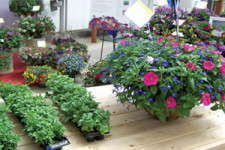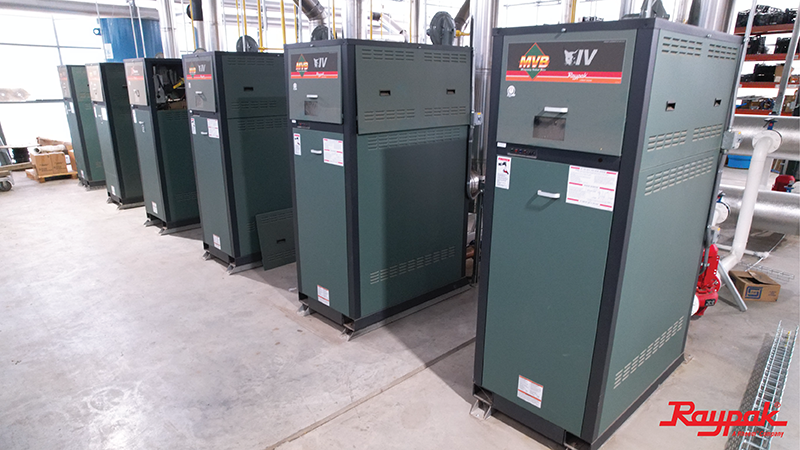Capitalizing On Combo Liners

Pay more for a premium liner? In this economy, when margins are tighter than ever and more growers are buying in cuttings to root themselves? Believe it or not, some of the nation’s largest growing operations are buying in multi-cutting liners to create instant mixed containers and baskets.
While the production leaders at Costa Farms in Florida were intrigued by the multi-cutting liners when they were first shown in California during Spring Trials, they initially perceived them as cost prohibitive. “Internally, we scoffed, too,” says Cindee Delbridge, who directs production planning and purchasing for Costa Color. “There’s no way we’d pay that much for a liner, until we started trialing them and seeing the benefits.”
Although the liner costs more upfront, it more than offsets the hidden costs in producing combination plantings. “There is a cost for failure to execute,” she explains. “If you are planning combinations with three genera from three suppliers and one failed, your combo was blown. You either scramble to create it or don’t create it at all. There’s also the time you save your people in the field if they get a liner that’s already done versus trays of three different items to assemble.”
From 2009 to 2010, Costa tripled the number of multi liners it purchased. Dömmen’s Confetti liners represent the lion’s share. “We use all the multi-liner programs but Confetti is the biggest, about 70 percent,” she says. “We used well over half a million units of just Confetti last year.”
Bell Nursery in Maryland is another big Confetti customer. Head Grower Tom Wheeler says while growers can achieve nice combinations planting single varieties, the difference with Confetti is the guaranteed compatibility and uniformity of the components in the mixes. “In addition to the benefits of consistent high quality, uniform habit and dependable timing, the added plus is the labor savings when planting combo baskets,” he says, adding that Bell plans to trial some of the other multi liners on the market, too.
Fanfare Surrounding Confetti
Heading into its fourth season, the response to Dömmen’s Confetti liner program has been nothing short of astonishing. Each liner has three unrooted cuttings. It was introduced in late 2007 with 300,000 units sold, of which 35 percent was in Europe. Partners in the U.S. launch were rooting station Bob’s Market & Greenhouses and broker Ball Seed. The next year, demand increased 800 percent to 2.3 million units sold. This past year, units increased more than 300 percent to 7.5 million units sold. It was also the first season with the unrooted Confetti-in-a-box concept. The goal for 2010-2011 is another 66 percent increase, Dömmen’s Chief Business Development Officer Perry Wismans reports.
While 800 North American growers are purchasing Confettis as liners, the additional 100 who are purchasing them unrooted are buying close to the same volume as the 800.
“Talking to growers, we found out one of their biggest challenges has been the planning and production of mixed containers and baskets,” Wismans says. “Finding a balance between vigor, flowering time and color is not as simple as it sounds. With the Confetti liner concept, we have taken out the guesswork.”
Another benefit is the ability to coordinate national promotions at retail. “Certain Confetti mixes are national promotions with larger retailers, which allows for national advertising and consistent performance in the stores,” Wismans says. “These promotions have been developed with the growers. Only after intense testing the programs are shown to retailers. Once listed, growers feel comfortable growing these Confetti mixes, as they have been included in the test phase. Dömmen is very grateful for the grower partners all over North America, who helped us develop new and exciting mixes.”
Dömmen is protecting its first-mover advantage by pursuing a utility patent that would prevent other companies from offering multi-cutting liners without permission from Dömmen. “The Confetti utility patent application is still under examination,” Wismans says. “I don’t know if the competition would have to stop, however, they would have to negotiate with Dömmen the conditions for use of the utility patent.”
According to the U.S. Patent and Trademark Office (USPTO), a utility patent protects any new invention or functional improvement on existing inventions. This can be a product, machine, process or composition of matter. It is much broader than a design patent or a plant patent and generally permits its owner to exclude others from making, using or selling the invention for up to 20 years from the date of application.
A Tsunami Of Interest
While USPTO deliberates, the competition is charging ahead with an array of multi-liner programs. These include Trixi Liners by Selecta and Syngenta’s Kwik Kombos. The Proven Winners partners have launched their own programs and several other liner producers are doing the same.
Gro ‘N Sell in Pennsylvania is entering its third season producing Trixi Liners for the market after spending a season working out production protocols with Selecta. Production Manager Anne Haag says sales of Trixis increased by 300 percent last year.
“We believe this is because the quality and performance was consistent and predictable,” she says. “There has been such extensive trialing and evaluation of each recipe that by the time they reach our customer, they are tried and true. This research on each recipe starts with Selecta a year or more before anything is shown to the public. We have assisted in this process by receiving trial shipments, which we root and grow to finish.”
Gro ‘N Sell’s owner Dave Eastburn says growers are rethinking value. “More growers are finding that low plant input cost does not always equal higher profits,” he says. “There is a cost, but a Trixi Liner can be planted and hung, saving a grower two or more weeks of premium bench space over the typical way of doing hanging baskets or containers, since they have more age, PGR (plant growth regulator) treatments and pinches. The Trixi Liner is a great labor and time saver and provides predictable quality with a predictable finish.”
Rooting Your Own
While the new multi liner form makes life easy for growers who transplant and finish, there is a learning curve for the growers who root them.
“Everything becomes more critical from timely receipt of cuttings, cooling treatment before planting, sorting of collections, ensuring all components are received, separating collections for callusing and rooting environment, developing VPD (vapor pressure deficit) values for each collection, along with timely and specific PGR and pinching schedules,” Eastburn says. “What seems like a simple task becomes more involved with individual growing requirements now being condensed into one cell.”
Marc Verdel, head grower at Battlefield Farms in Virginia, says labor is diverted to sticking at the front end instead of at the transplant line. “We’ve approached multi-cutting liners several different ways,” he says. “We haven’t decided which way is best but we tend to stick with one person doing one color. It does take a little bit longer but it’s not too terrible. We’ve also done it so one person sticks the combination or Confetti.”
Zylstra Greenhouses in Michigan has created a special dibble board to put three holes in Ellepots for Trixi liners. The company also uses Lean Flow practices at the sticking line. “If you don’t have a strategic plan, labor will kill you,” says Head Grower Brent Troost. “We stick on a belt. People on our production team are quick with their hands, but the multi liners are three trays in one, so the timing is slower.”
Mast Young Plants in Michigan is producing Syngenta’s Kwik Kombos and has come out with a line of its own, Designer Liners, based on its extensive trials. “Our advantage is we don’t have to stick with the genetics of one breeder, because if you can’t supply the variety, you can’t do the combo,” owner Joyce Mast says. “We’re also using accent plants like ipomoea and lamium to set ourselves apart.” Mast has a dedicated production team to stick the liners.
Solving Supply Chain Problems
Express Seed’s General Manager Dave Watt says multi-liner programs are a strategy to address supply coordination issues. “It’s clear some growers were having challenges managing the different aspects of building combos from cuttings,” he says. “Orders needed to be filled in coordination with how the grower’s production scheduling was intended (no back orders or shortages), and although obvious, they need to focus their combo offerings on varieties that made sense culturally.”
Express is offering Dömmen’s Confettis, Syngenta’s Kwik Kombos and a line key grower customers have created with Oro Farms. Eighty percent of these sales are unrooted cuttings.
Scott Barnitz of Bob’s Market & Greenhouses feels fortunate to have been one of the first growers to offer multi liners and sees a bright future, especially as smaller and midsized growing operations catch on to the potential. “There’s no limit to the concept itself. It’s like a mixed container but on a different level,” he says. “I think it’s a concept that will continue to gain momentum.”









